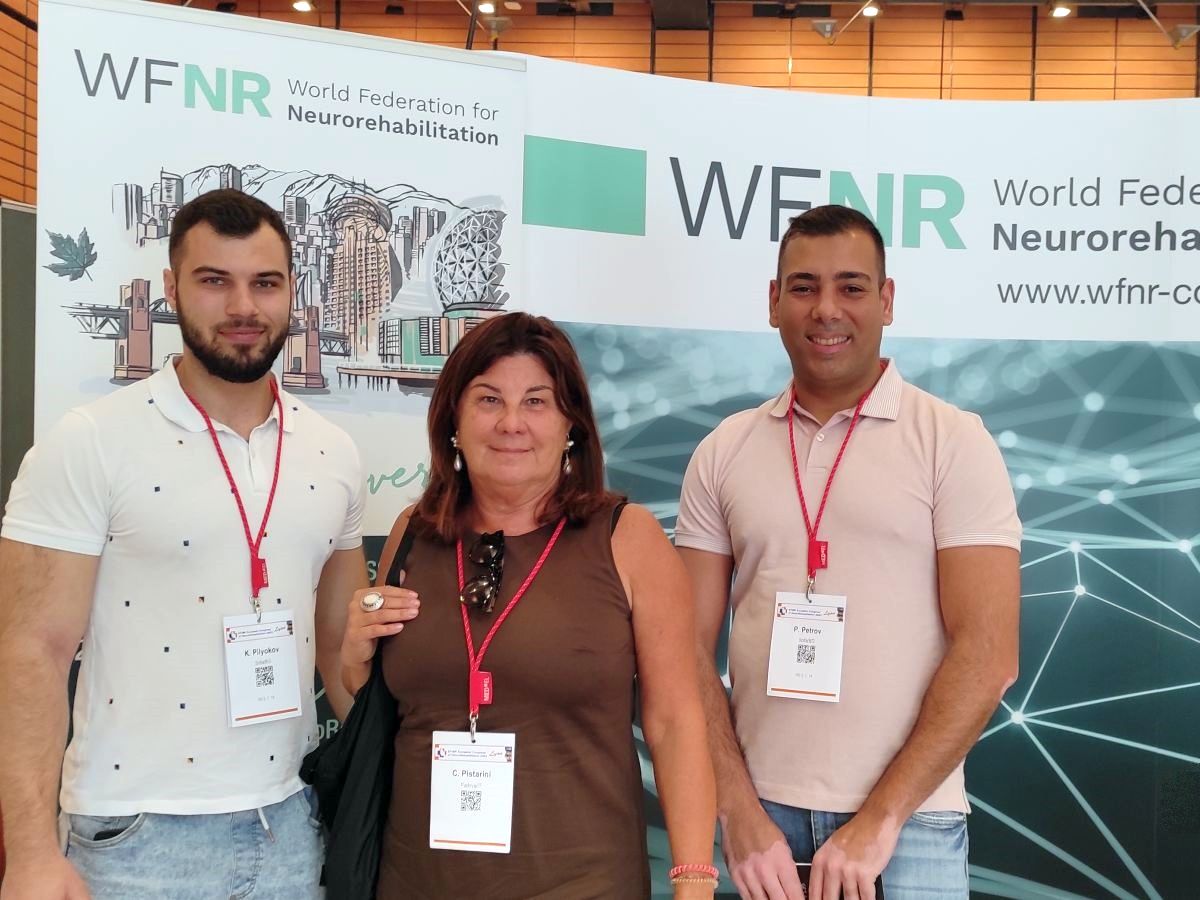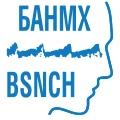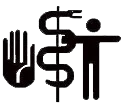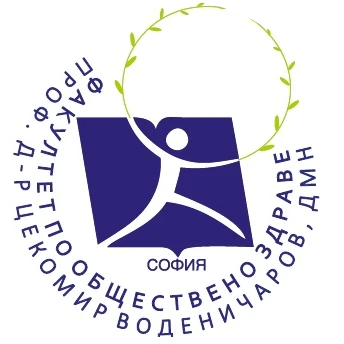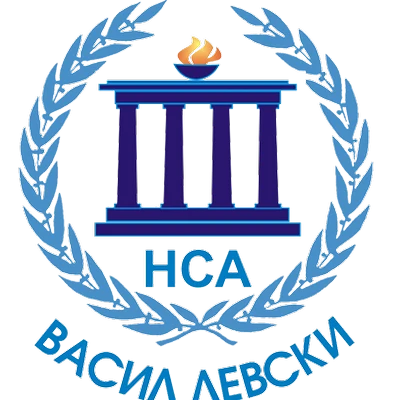“A meeting of the brain and hope” – “Guidelines for motor rehabilitation after stroke” part I
The International Congress of Neurorehabilitation is an extremely important event for the medical community and deals with the treatment and rehabilitation of patients with various neurological diseases. This event brought together scientists, doctors and physiotherapists from all over the world to exchange knowledge, scientific achievements and innovative practices in the field of neurorehabilitation.
It was a pleasure and an honor to meet Professor Caterina Pistarini, Secretary General of the World Federation of Neurorehabilitation (WFNR). Qualified Professor in Neurology; Director of Neuro-Rehabilitation Department of the ICS. Maugeri (Scientific Institute of Genova Nervi); Director of Genova Nervi Institute; Director of Coma Unit; Director of Spinal Cord Unit. Her research interest spans multiple neurorehabilitation areas related to stroke, traumatic brain injury, spinal cord injury, and organizational care protocols for patients with neurological disabilities.
In this and the next articles dedicated to the VII European Congress of Neurorehabilitation with Bulgarian participation, Lyon, France, we will share about the extremely fruitful participation we took in the scientific forum and the practically oriented training seminars with innovative solutions and methods. Together with many of our colleagues from all over Europe, we have advanced our knowledge about the recovery of patients with neurological diseases. Important issues related to the rehabilitation of patients with multiple sclerosis, amyotrophic lateral sclerosis, craniocerebral injuries, spinal cord injuries and patients who have experienced a brain stroke were touched upon in thematic classes. We will share a small part of the recommendations and instructions with you in this and the following thematic articles, which we called “Meeting of the brain and hope”.
- The topics covered in this article are mainly intended for specialists in the field of neurorehabilitation (kinesitherapists in neurology) and physiotherapy. The information is presented in the form of recommendations and established practical guidelines for the correct implementation of the rehabilitation program.
Recovery of upper limb extremity function after stroke should always be included in the rehabilitation program, and it should be goal-oriented. The rehabilitation of the upper limb extremity must be individually tailored and the therapeutic decision must be made in relation to the overall goals and their priority.
Therapeutic decisions in the rehabilitation of the hand are based on the basic therapeutic principles that follow the improvement of motor control. Of great importance are the therapeutic services that are available locally.
Evidence-based recommendations are divided into acute, subacute and chronic phases. Also in patients with mild, moderate and severe paresis.
Recommendations for the acute and subacute phase after stroke
In the acute phase after stroke, recovery of lost movements is recommended, while in the chronic phase, therapeutic goals are more aimed at improving the performance of activities. The choice of interventions performed in each patient is different depending on the severity of the paresis.
Dosage and organization in the acute and subacute phase in upper extremity rehabilitation after stroke
In the acute phase, special training for active motor control of the hand should be provided for at least two hours per week for several weeks. The aim is to accelerate the motor recovery of the hand after a stroke.
Increasing therapy time to three hours per day may provide benefit in the subacute stage and should be considered on an individual basis.
Depending on the individual circumstances available to each patient, the therapeutic options are: individual therapy with a therapist, circuit training or home training. Circuit training can involve improving various physical skills such as mobility, balance, and function (ie, use) of the arms and legs. Circuit training can be done individually or in a small group. Home training should be monitored periodically and tailored to the severity of the paresis. The focus should be on training and the repetition of activities lost due to the disability.
New evidences in the acute and subacute phases of severe hand paresis
Depending on the patient’s needs, individual psychotherapy may be included first, which can help remove barriers that interfere with emotional and mental well-being.
Classical training for the recovery of selective upper extremity movements in the acute and subacute phase after stroke is a major therapeutic goal. This type of training is also applicable in the chronic stage.
Daily mirror therapy can be applied as additional independent training over a period of several weeks to improve motor control. Mirror therapy has a positive effect on patients with neuropathic pain or neglect.
Unfortunately, drugs to improve brain neuroplasticity and recovery of motor control after stroke are not yet well studied.
Neuromuscular electrical stimulation of wrist and finger flexors and extensors and functional electrical stimulation can be used to improve upper limb selectivity and arm movements. Neuromuscular electrical stimulation of the shoulder muscles can be used to prevent subluxation.
Somatosensory stimulation (especially thermal) is an option as adjunctive therapy in the subacute phase, as is acupuncture.
The use of splints or other orthotic devices to immobilize the patellar joint, glenohumeral joint, or scapulothoracic complex in severe upper extremity involvement does not lead to better motor recovery. Therefore, it should not be used for this purpose. Orthotics may be used to prevent contractures or treat pain associated with severe paresis of the upper limb.
Recommendations for upper limb extremity rehabilitation in moderate and mild paresis
A three-week therapeutic course that trains sensorimotor integration of the upper limb improves dexterity in patients with mild to moderate paresis.
When improving upper extremity activities are primary goals of therapy, repetitive motor tasks are recommended.
Exercises to increase muscle strength can be an element of individual therapy.
The smart glove is a rehabilitation device that measures movements of the forearm, wrist and fingers using accelerometer and flexion sensors. They can also be used with a special training application.
Mirror therapy is recommended.
Low-frequency repetitive transcranial magnetic stimulation can be applied contralateral to the lesion or ipsilaterally applied high-frequency transcranial magnetic stimulation of the primary motor cortex. These types of therapies can be considered adjunctive therapies. They can be performed by qualified therapeutic staff and are recommended in the acute phase after a stroke.
Patients with preserved function of the upper extremity and no serious problems related to pain or spasticity in the affected upper extremity should perform forced induced movement therapy.
Immobilization of the unaffected upper limb extremity during therapy sessions is recommended when moving objects during specialized therapy.
There is evidence that Botox reduces spasticity, spasticity-related pain, and difficulty integrating the plegic upper limb into activities of daily living.
Guidelines for improving mobility (muscle strength, coordination and balance) and gait at different stages after stroke
Approximately two-thirds of stroke patients suffer from impaired mobility. Structured gait rehabilitation programs differ in the different phases of stroke recovery (acute, subacute, and chronic) and their specific therapeutic goals. Recovery of mobility after stroke depends on the ability to walk, the duration of the stroke, and the various components of gait such as speed, endurance, and balance.
Recommended primary interventions are presented for the clinically relevant endpoints mentioned above.
The rehabilitation recommendations were compared with those of four other European and North American accredited national guidelines.
This review of the material not only provides recommendations for gait training, but also helps to identify elementary rules for gait recovery and rehabilitation.
Elementary rules are often based on physiological principles. They are generally valid for stroke patients and allow to be adapted and shaped to each patient individually.
Recommendations for patients who are unable to walk without assistance and are in the acute or subacute phase after stroke
In the subacute phase, intensive gait training should be performed to restore the ability to walk.
Gait improvement in patients who can walk independently or patients who need minimal assistance to walk
All guidelines recommend intensive, progressive, and task-related training in walking to further improve walking ability. A treadmill is recommended as additional therapy
Treadmill-based therapies have various advantages:
a) may be particularly useful for more severely affected patients
b) support the learning of specific aspects of walking.
c) walking speed and distance traveled are improved.
To improve gait in patients who can walk independently in the subacute phase after stroke, intensive and progressive walking training using conventional methods or using a treadmill should be included in their procedure.
Specific training combined with motor imagery (ideomotor training), functional electrical stimulation, electro-acupuncture, use of walking devices or assistive devices can be added.
In patients in the chronic stage after stroke who can walk independently but have a spastic equinovarus deformity of the foot, the use of botulinum toxin is recommended to reduce the need for a support device (splint, orthosis). Intensive and progressive walking training combined with tasks and virtual reality can be applied.
Recommendations for improving balance in the subacute stage after stroke and reducing the number of falls in patients who can walk independently or with minimal assistance.
Dynamic balance training should be performed as an integral part of intensive walking training. This claim has a moderate quality of evidence.
In stroke patients, environment-adapted balance training improves those aspects of balance that are specifically trained.
For example:
a) exercising postural control on a force platform improves postural sway
b) training walking ability through overhead walking training, circuit training or using walking aids improves standing balance, walking ability and distance covered.
c) practicing balance during various core activities leads to improved performance of these activities in daily life.
Based on clinical data, there is believed to be very limited transfer between the different aspects of balance. Therefore, it should be trained in the context of walking and while performing activities of daily living to reduce the risk of falling.
To improve walking speed in patients who can walk independently with or without an aid or with little assistance, targeted progressive training to increase walking speed is recommended. This claim has a high quality of evidence.
If targeted progressive training to increase walking speed is not possible, intensive walking training with or without the use of a treadmill should be performed in the subacute stage.
Another option is an intensive supervised home exercise program in the subacute stage. This claim has a moderate quality of evidence.
In appropriate patients in the chronic stage, orthosis with or without electrical stimulation should be applied. The claim has a moderate quality of evidence.

